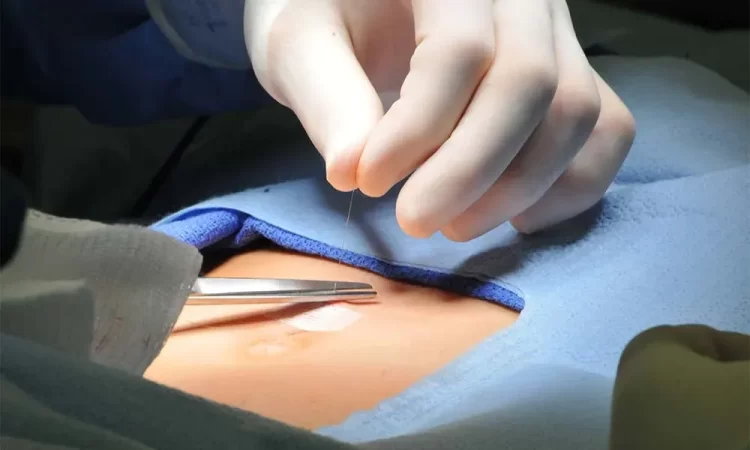Optimizing Medical Facilities for Effective Hernia Repair Surgery

In the realm of healthcare, the provision of top-notch medical facilities is paramount to ensuring patients receive optimal care. One such crucial medical procedure is hernia repair surgery, a common yet intricate surgical intervention. To deliver exceptional outcomes in hernia repair surgery, medical facilities must prioritize various factors ranging from state-of-the-art equipment to highly skilled healthcare professionals. Let’s delve deeper into the essentials of optimizing medical facilities for effective hernia repair surgery.
State-of-the-Art Equipment and Technology
First and foremost, a well-equipped medical facility plays a pivotal role in conducting successful hernia repair surgeries. Investing in state-of-the-art equipment and technology enhances surgical precision and patient safety. Advanced laparoscopic instruments, robotic surgical systems, and high-definition imaging devices facilitate minimally invasive hernia repair procedures, leading to quicker recovery times and reduced postoperative complications. Additionally, incorporating innovative hernia mesh materials ensures superior hernia repair outcomes, promoting long-term patient satisfaction.
Specialized Healthcare Professionals
The expertise of healthcare professionals directly influences the quality of hernia repair surgery. Medical facilities must employ highly skilled surgeons specializing in hernia repair procedures. Surgeons with extensive experience in both traditional and minimally invasive hernia repair techniques can effectively address diverse patient needs and complexities. Moreover, a multidisciplinary team comprising anesthesiologists, nurses, and support staff proficient in perioperative care ensures comprehensive patient management throughout the surgical journey, fostering positive surgical experiences and optimal recovery outcomes.
Comprehensive Preoperative Evaluation
A thorough preoperative assessment is indispensable in optimizing hernia repair surgery outcomes. Medical facilities should prioritize comprehensive patient evaluations, encompassing medical history review, physical examinations, and diagnostic investigations. Identifying underlying medical conditions, such as cardiovascular diseases or respiratory disorders, enables healthcare providers to mitigate perioperative risks and tailor an individualized surgical approach. Moreover, assessing hernia characteristics, including size, location, and complexity, guides surgeons in selecting the most appropriate repair technique, whether it be open, laparoscopic, or robotic-assisted surgery.
Patient-Centered Care
Central to the success of hernia repair surgery is patient-centered care, which emphasizes personalized treatment approaches tailored to individual patient needs and preferences. Medical facilities should prioritize clear communication and patient education, ensuring that individuals undergoing hernia repair surgery have a comprehensive understanding of the procedure, potential risks, and expected outcomes. Establishing open channels of communication enables patients to actively participate in decision-making processes, fostering trust and collaboration between healthcare providers and patients.
Optimized Surgical Techniques
Effective hernia repair surgery hinges upon the implementation of optimized surgical techniques tailored to each patient’s unique anatomical and clinical characteristics. Minimally invasive approaches, such as laparoscopic and robotic-assisted surgeries, offer numerous advantages, including smaller incisions, reduced postoperative pain, and faster recovery times. Additionally, the utilization of tension-free mesh hernia repair techniques enhances surgical durability and reduces the risk of hernia recurrence. By staying abreast of advancements in surgical techniques and adhering to evidence-based practices, medical facilities can consistently deliver superior hernia repair outcomes.
Postoperative Care and Follow-Up
The provision of comprehensive postoperative care and follow-up is imperative in ensuring successful hernia repair surgery outcomes and promoting patient well-being. Medical facilities should implement standardized postoperative protocols encompassing pain management strategies, wound care techniques, and early mobilization protocols. Regular follow-up appointments enable healthcare providers to monitor patient progress, address any concerns or complications promptly, and provide ongoing support throughout the recovery process. Emphasizing patient engagement and empowerment during the postoperative phase fosters positive surgical experiences and facilitates long-term treatment success.
Conclusion
In conclusion, optimizing medical facilities for effective hernia repair surgery involves a multifaceted approach encompassing state-of-the-art equipment, specialized healthcare professionals, comprehensive preoperative evaluation, patient-centered care, optimized surgical techniques, and comprehensive postoperative care and follow-up. By prioritizing these essential elements, medical facilities can consistently deliver superior hernia repair outcomes, enhance patient satisfaction, and uphold the highest standards of surgical excellence in healthcare delivery.







